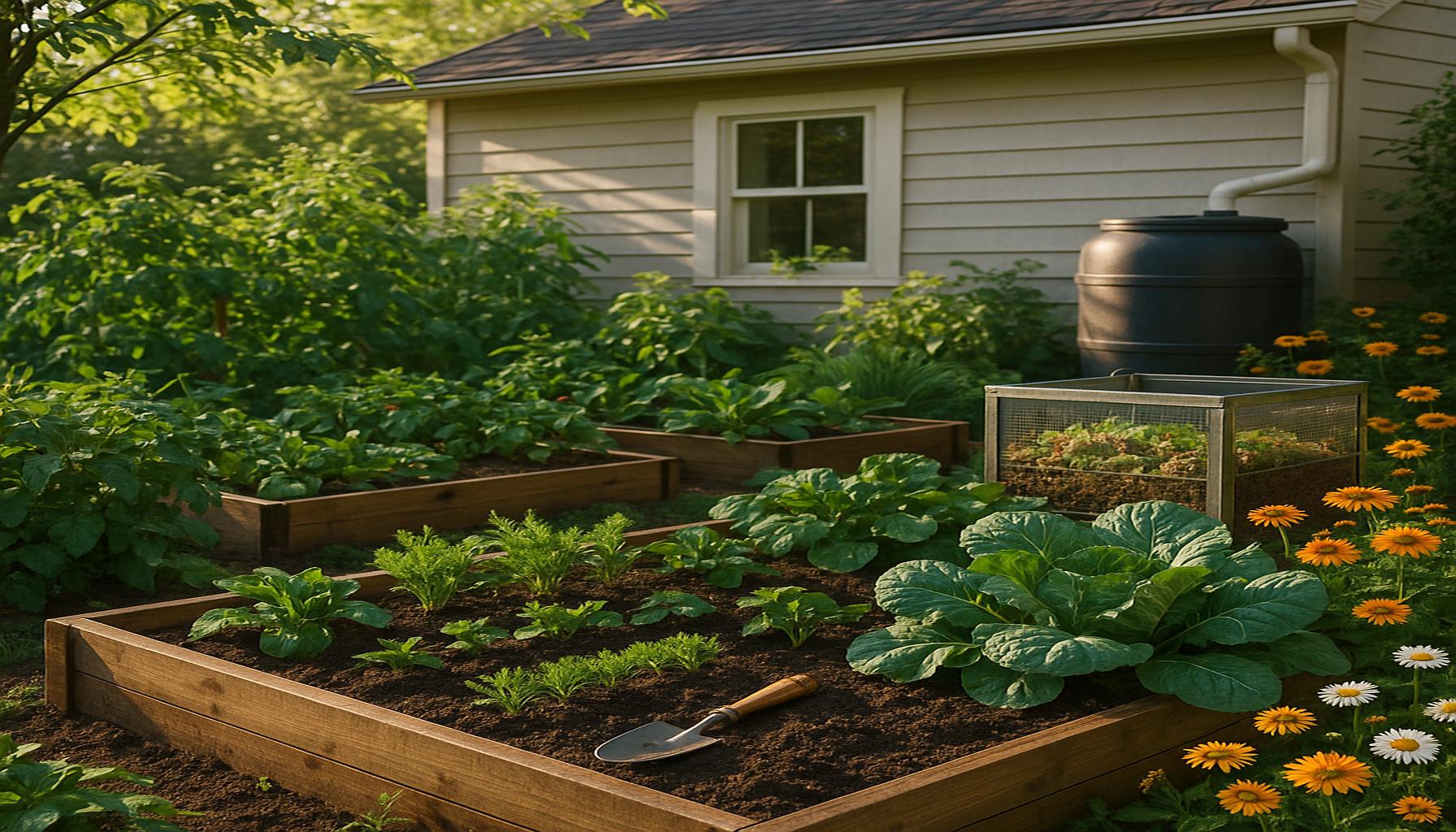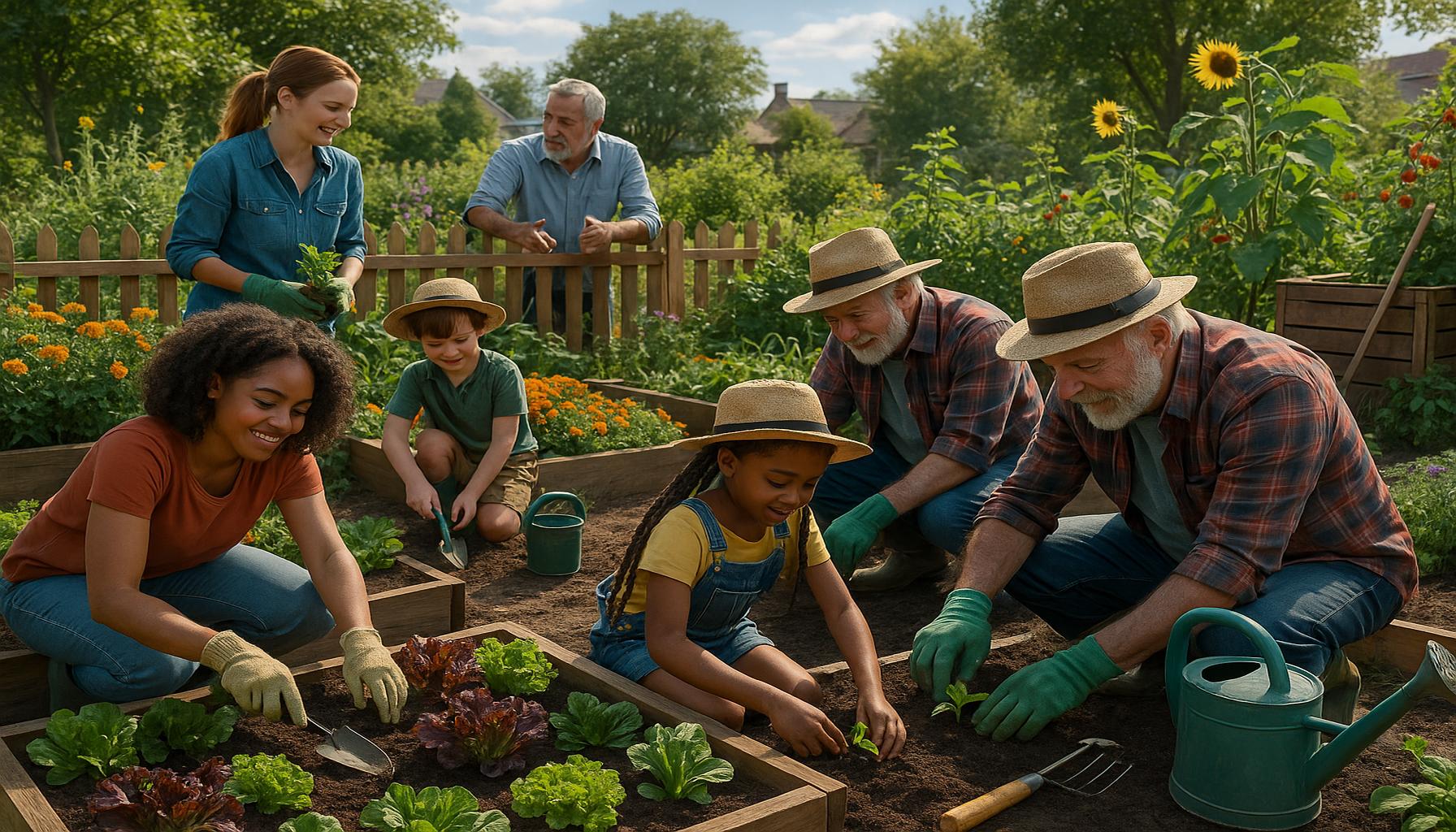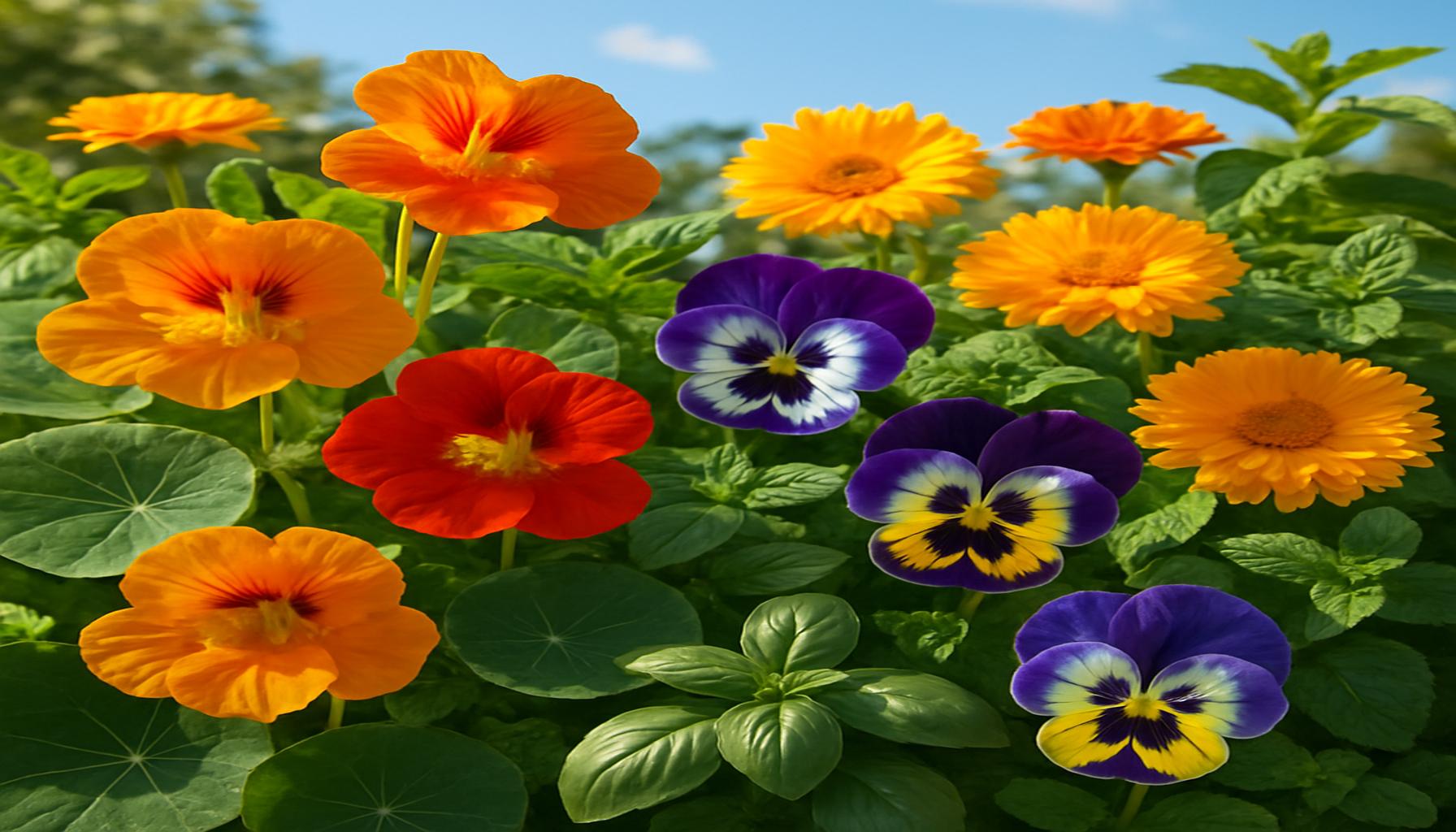How to Create a Sustainable Garden at Home: Tips for Beginners

Transforming your outdoor space into a sustainable garden can be a rewarding experience that benefits both you and the environment. By focusing on sustainable practices, you can create a thriving garden that conserves resources, nurtures biodiversity, and enhances your home. Here’s how you can start your journey towards a greener lifestyle.
Why Choose a Sustainable Garden?
A sustainable garden minimizes chemical use and promotes eco-friendly approaches. This type of gardening offers numerous advantages that have far-reaching impacts on both the ecosystem and your personal well-being.
- Improved Soil Health: By using compost and natural fertilizers, you enhance soil fertility. For instance, compost not only adds nutrients but also improves soil structure, leading to better moisture retention. This can be as simple as collecting kitchen scraps and yard waste to create rich compost that returns organic matter to the soil.
- Water Conservation: Techniques like rainwater harvesting reduce reliance on tap water. Installing a rain barrel can be a straightforward project, allowing you to collect rainwater to nourish your plants during dry spells, thus minimizing your water bill and conserving this precious resource.
- Wildlife Support: Native plants attract beneficial insects and pollinators, fostering a balanced ecosystem. For example, planting milkweed in your garden not only adds color but provides crucial habitat for monarch butterflies, showing how your choices can directly support local wildlife.
Getting Started with Sustainable Gardening
As a beginner, you may feel overwhelmed, but starting small can make the process manageable. Here are some key steps that can set you on the right path:
- Choose Native Plants: Native plants require less water and care, adapting well to local conditions. In the United States, consider adopting plants like echinacea or black-eyed Susans, which thrive in many regions and attract local pollinators.
- Plan Your Space: Utilize vertical gardening and raised beds to maximize efficiency. Vertical gardens not only save space but can also reduce pest issues and improve air circulation around plants. This method is perfect for urban dwellers with limited garden area.
- Practice Organic Methods: Avoid synthetic pesticides and fertilizers, opting instead for natural alternatives. You might explore options such as neem oil or diatomaceous earth to manage pests and diseases without harming beneficial insects.
Adopting these practices not only contributes to environmental sustainability but also results in a beautiful, productive garden. As you nurture your plants and observe the wildlife they attract, you’ll become more connected to nature and your community. Dive deeper into each aspect as we explore how to create a sustainable garden at home!
DIVE DEEPER: Click here to enhance your communication skills
Essential Components of a Sustainable Garden
Creating a sustainable garden at home involves integrating various environmentally friendly practices that are beneficial for both the ecosystem and your gardening experience. As a beginner, understanding the key components can help simplify the process and ensure your garden flourishes while promoting sustainability.
Soil Management
Healthy soil is the foundation of any sustainable garden. Investing time in soil management not only supports plant growth but also enhances biodiversity. Here are some effective strategies:
- Composting: Start a compost bin to turn kitchen scraps and yard debris into nutrient-rich compost. This natural fertilizer enriches the soil, promotes beneficial microorganisms, and helps retain moisture.
- Crop Rotation: Rotate your plant families each growing season to prevent soil depletion and reduce pest buildup. For example, alternating between legumes, which enrich the soil through nitrogen fixation, and leafy greens can improve overall soil health.
- Mulching: Apply organic mulch such as wood chips or straw around your plants. Mulch helps control weeds, regulates soil temperature, and maintains moisture levels, resulting in less frequent watering.
Watering Wisdom
Water conservation is a critical part of sustainable gardening. Employing smart watering practices not only conserves water but also supports plant health. Consider these methods:
- Drip Irrigation: Install a drip irrigation system to deliver water directly to the root zone. This method reduces water waste and minimizes evaporation, making it a highly efficient option for watering your garden.
- Watering Schedule: Water plants early in the morning or late in the evening to reduce evaporation and ensure your plants get the moisture they need. Consistent watering also promotes deeper root growth.
- Rain Gardens: Designate an area of your garden to collect runoff from rainfall. This not only helps manage stormwater but also creates a habitat for local wildlife, enhancing biodiversity.
Choosing the Right Plants
Selecting the right plants is crucial to your garden’s success and sustainability. Here are tips to guide your choices:
- Opt for Perennials: Incorporate perennial plants that come back year after year, minimizing the need for replanting and soil disruption. Popular choices include coneflowers and hostas.
- Introduce Companion Planting: Use companion planting techniques to promote beneficial relationships between plants. For instance, planting marigolds near vegetables can deter pests and improve plant vigor.
- Focus on Biodiversity: A diverse range of plants creates a healthier ecosystem, providing food and habitat for various wildlife. Mix flowers, herbs, and vegetables for a flourishing garden.
By implementing these essential components into your sustainable garden, you are not only creating a beautiful outdoor space but also contributing positively to the environment. Each decision you make can lead to a healthier planet. Stay tuned as we delve deeper into sustainable gardening practices and explore more ways to enhance your green space!
Essential Tools for Beginners
Creating a sustainable garden at home requires a few key tools that make the process easier and more effective. Consider investing in a basic set of gardening tools, including a trowel, pruning shears, a hand rake, and a watering can. These will help you manage your garden tasks with better precision. Additionally, you might want to consider eco-friendly watering solutions, such as rain barrels, which conserve water and promote responsible usage, perfectly aligning with sustainable gardening practices.
Selecting Sustainable Plants
When choosing plants for your sustainable garden, opt for native species that are well-suited to your local climate. These plants typically require less water and maintenance, thus minimizing your environmental footprint. Incorporating perennial plants can also be beneficial, as they return year after year without the need for replanting, ultimately saving you time and resources. Furthermore, consider including a diversity of plants to attract beneficial insects, such as pollinators, which are essential for maintaining the ecological balance in your garden.
Soil Management and Fertility
Healthy soil is the backbone of a sustainable garden. Implement organic practices such as composting, which recycles kitchen scraps and yard waste into a nutrient-rich amendment for your garden soil. This not only improves its fertility but also promotes healthy plant growth. Additionally, consider using techniques such as crop rotation and cover cropping to maintain soil health while preventing pests and diseases. These methods ensure your garden remains productive and resilient over time.
Caring for Your Garden Sustainably
Implementing sustainable gardening practices doesn’t end at planting. Regular maintenance, such as mulching to retain soil moisture and weeding to reduce competition, is critical. Use organic fertilizers to nourish your plants and avoid chemical pesticides that can harm beneficial insects and surrounding wildlife. Monitoring plant health and pest problems regularly will help you catch any issues early on, allowing you to implement green solutions promptly.
| Category | Advantages |
|---|---|
| Organic Gardening | Promotes biodiversity and soil health. |
| Water Conservation | Utilizes techniques like drip irrigation and rainwater harvesting. |
| Native Plants | Requires less care, minimizing water and fertilizer usage. |
| Composting | Reduces waste and enhances soil fertility naturally. |
By engaging with these sustainable practices, you transform your gardening efforts into a more environmentally-friendly and rewarding experience. Whether you are a novice or a seasoned gardener, these tips not only enhance your gardening skills but also contribute to the overall well-being of the planet.
DISCOVER MORE: Click here for innovative gardening ideas
Sustainable Gardening Practices
Beyond the essential components of creating a garden, implementing sustainable gardening practices is vital for reinforcing your efforts. These practices not only enhance your greenery but also contribute to a larger ecological goal. Here are some innovative techniques that beginners can adopt to foster sustainability in their gardens:
Pest Control Techniques
Maintaining healthy plants is key to a thriving garden, and managing pests sustainably can be a gamechanger. Frequently, synthetic pesticides can cause more harm than good. Instead, consider these eco-friendly alternatives:
- Natural Predators: Introduce beneficial insects such as ladybugs and lacewings that prey on common garden pests like aphids. Creating a habitat in your garden encourages these allies to settle in, offering a natural form of pest management.
- Homemade Remedies: Utilize ingredients from your kitchen to create effective pest deterrents. A mixture of water, dish soap, and crushed garlic can serve as a non-toxic spray that repels unwanted visitors without harming beneficial insects.
- Attract Pollinators: Design your garden to attract bees, butterflies, and other pollinators by including a variety of flowering plants. Pollinators play a crucial role in the growth and reproduction of many garden plants, contributing to biodiversity.
Energy Efficiency in the Garden
Creating a sustainable garden also involves being mindful of energy usage. Here are some strategies to enhance energy efficiency while enjoying gardening:
- Solar-Powered Lights: Incorporate solar lights to illuminate your garden paths and plant beds. These lights utilize renewable energy, reducing your carbon footprint while enhancing the aesthetic appeal of your space during the evening hours.
- Greenhouses and Cold Frames: Use greenhouse structures or cold frames to extend your growing season. These installations trap warmth and protect plants from frost, allowing you to grow food efficiently and without excess heat from traditional heating sources.
- Rainwater Harvesting: Collect rainwater in barrels to irrigate your garden. This practice conserves municipal water and provides plants with a natural and chemical-free watering source.
Seasonal Gardening
Embracing seasonal gardening promotes sustainability and helps you connect with the natural rhythms of your environment. Here’s how to make the most of seasonal gardening:
- Planting Calendar: Research and create a planting calendar tailored to your region. This way, you can time plantings with the seasons, ensuring optimal growing conditions and minimizing resource waste.
- Winter Gardening: Explore winter gardening techniques, such as growing cold-hardy vegetables like kale and spinach. Use protection methods such as row covers to shield your greens from frigid temperatures, allowing for year-round harvests.
- Seasonal Crop Rotation: Adapt your crop rotation practices with the seasons, focusing on planting cover crops during the off-season. This helps prevent erosion, suppress weeds, and enrich the soil with organic matter when tilled back in.
Incorporating these sustainable gardening practices allows you to maintain an environmentally friendly space while cultivating a fulfilling outdoor experience. Each technique contributes to an overarching goal of harmony with nature, turning the act of gardening into an action of stewardship and care for our planet.
DIVE DEEPER: Click here to discover more
Conclusion: Cultivating a Greener Future at Home
Creating a sustainable garden at home is not just a personal journey; it’s a step toward fostering environmental stewardship and resilience. By implementing the strategies discussed, beginners can cultivate a vibrant garden that harmonizes with nature while minimizing their ecological footprint. Choosing native plants, practicing efficient pest control, and utilizing energy-saving technologies—such as solar lights and rainwater harvesting—are essential practices that elevate home gardening into a sustainable art form.
Furthermore, incorporating seasonal gardening methods enables you to adapt to the changing climate while maximizing plant health and productivity. By planning your planting calendar and engaging in practices like crop rotation, you ensure that your garden remains fertile and lively throughout the year. Remember that every small action counts; embracing organic practices and nurturing biodiversity will pave the way for a thriving ecosystem in your backyard.
Furthermore, the joy of nurturing plants and witnessing the cyclical nature of gardening can foster a deeper connection with our environment. As you embark on your gardening journey, remain curious and engaged. Research local biodiversity, share knowledge with fellow enthusiasts, and explore additional resources on sustainable practices. Ultimately, your sustainable garden can become a sanctuary not only for you but also for various pollinators and wildlife, contributing positively to the planet. Together, we can cultivate greener spaces that educate, nourish, and inspire future generations.


